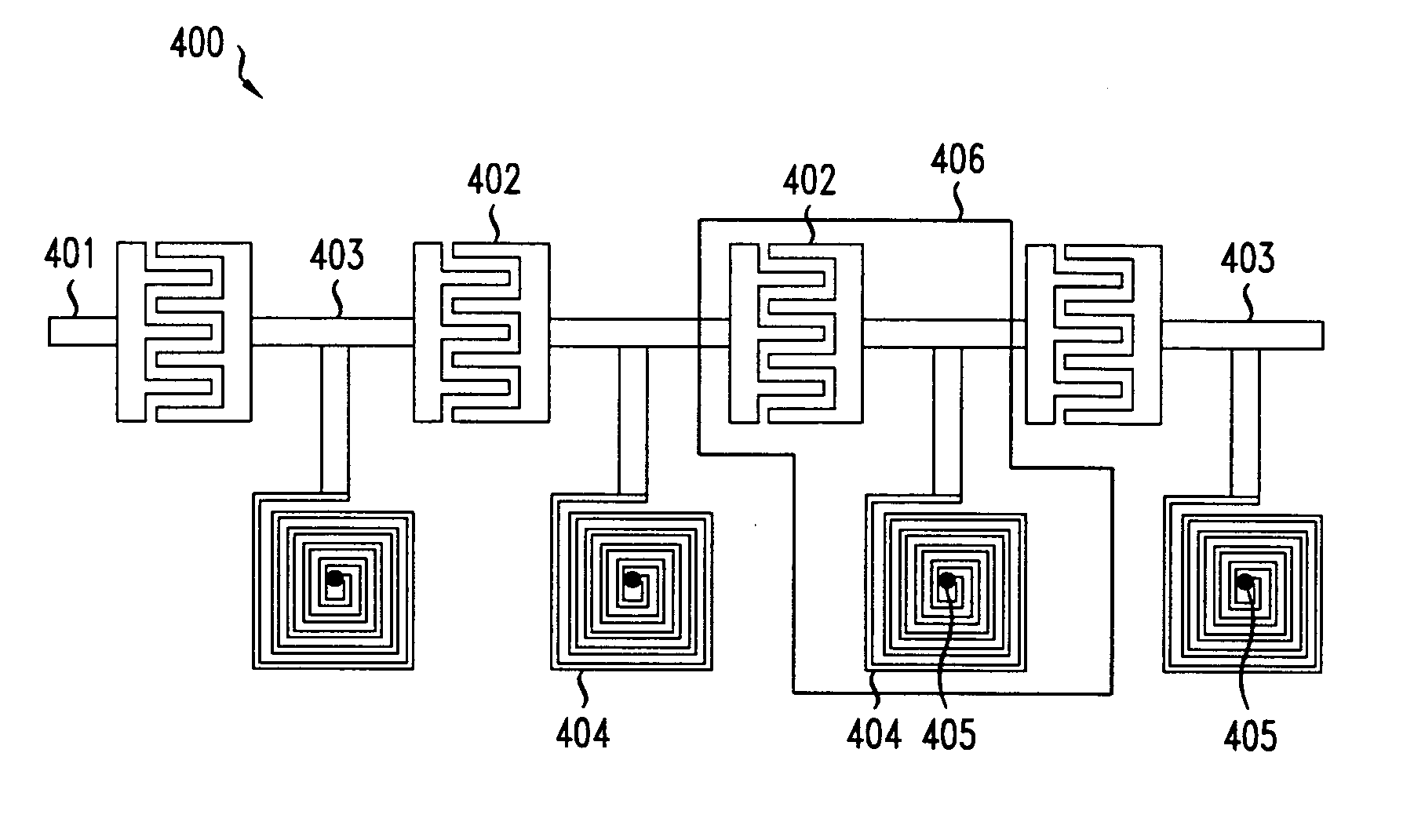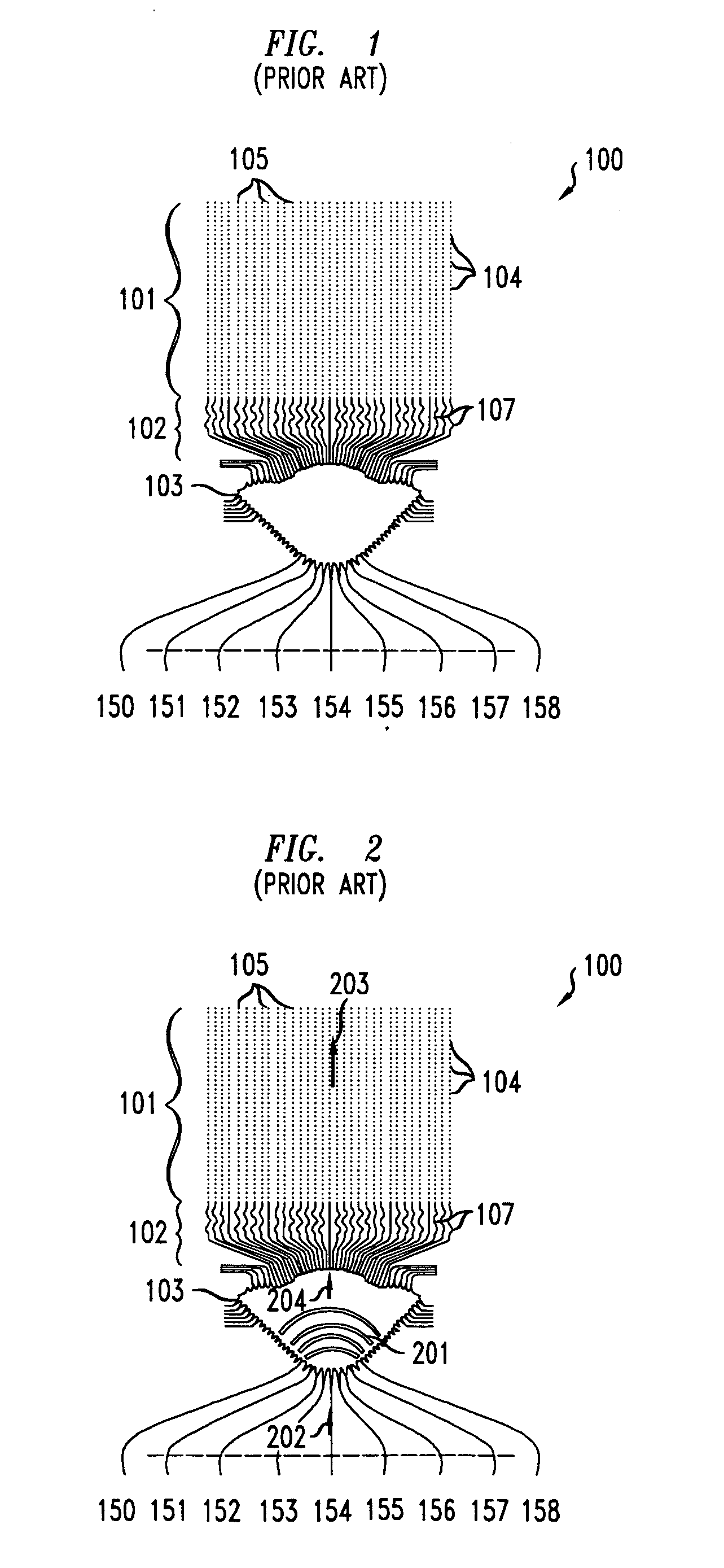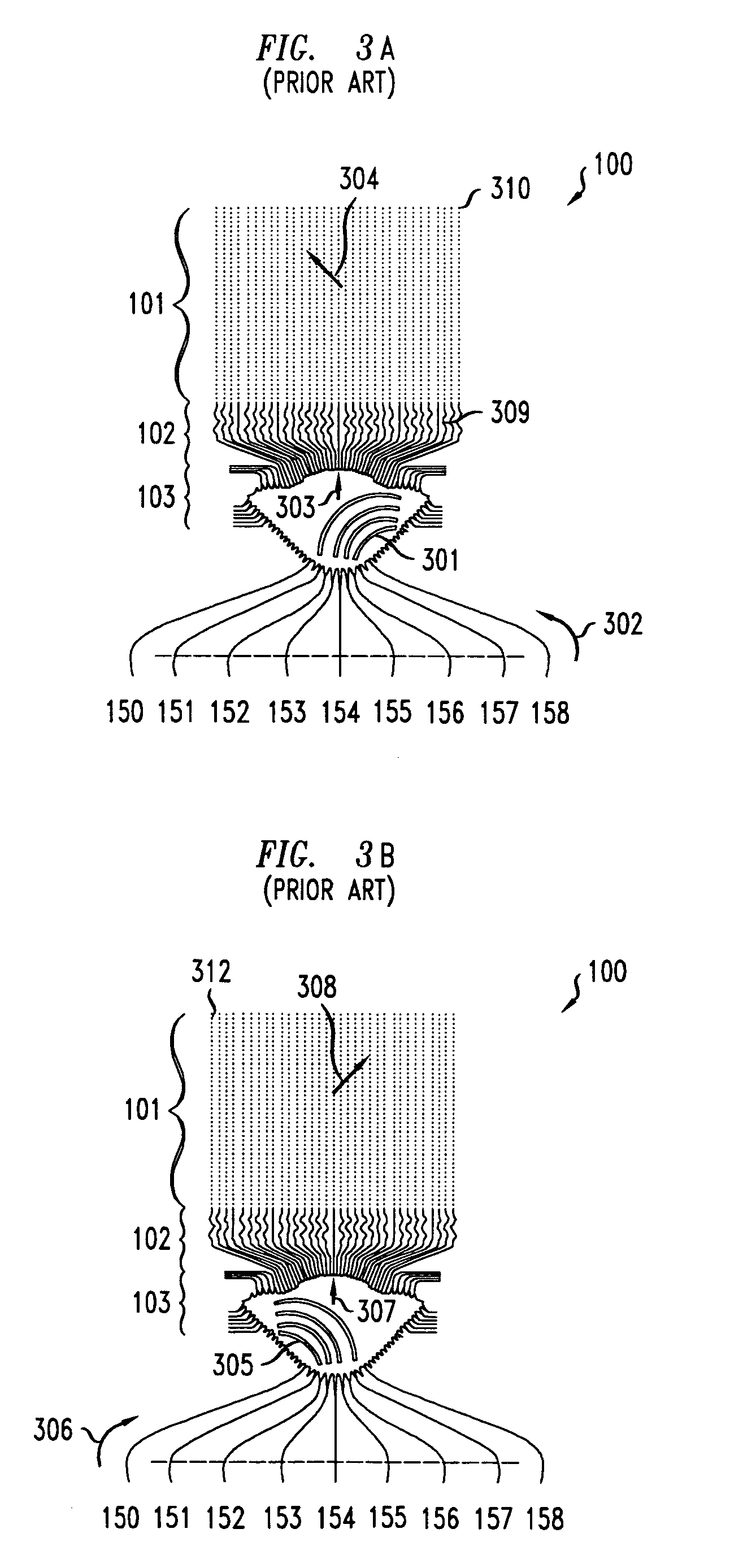Phased array metamaterial antenna system
a phased array and metamaterial technology, applied in the direction of antennas, waveguides, basic electric elements, etc., can solve the problems of high signal attenuation, limited improvement of antenna systems in certain regards, and inability to meet the requirements of lithographically printed microstrip transmission lines, so as to achieve the effect of improving the size and cost of in-vehicle phased array antenna systems, poor sidelobe performance, and high signal attenuation
- Summary
- Abstract
- Description
- Claims
- Application Information
AI Technical Summary
Benefits of technology
Problems solved by technology
Method used
Image
Examples
Embodiment Construction
[0013]FIG. 1 shows one illustrative, relatively low-cost prior art antenna system potentially useful for telecommunications and in-vehicle radar uses. Specifically, FIG. 1 shows a monolithic microwave integrated circuit (MMIC) phased array antenna system 100 which has antenna 101, lens portion 102, waveguide 103 and signal input lines 150-158. Antenna 101 has an array of antenna elements 101 wherein the individual elements 104 of each column 105 are electrically connected to each other. The individual columns 105 are, for example, lithographically printed microstrip lines with printed antenna patches disposed periodically along the microstrip lines. Each column 105 of antenna elements 104 is connected to one of delay lines 107 which are suitable for use as waveguides for electromagnetic signals. Delay lines 107 are, for example, microstrip lines lithographically printed on a suitable substrate. One or more electronic components, such as amplifiers, may be disposed along each of the ...
PUM
 Login to View More
Login to View More Abstract
Description
Claims
Application Information
 Login to View More
Login to View More - R&D
- Intellectual Property
- Life Sciences
- Materials
- Tech Scout
- Unparalleled Data Quality
- Higher Quality Content
- 60% Fewer Hallucinations
Browse by: Latest US Patents, China's latest patents, Technical Efficacy Thesaurus, Application Domain, Technology Topic, Popular Technical Reports.
© 2025 PatSnap. All rights reserved.Legal|Privacy policy|Modern Slavery Act Transparency Statement|Sitemap|About US| Contact US: help@patsnap.com



